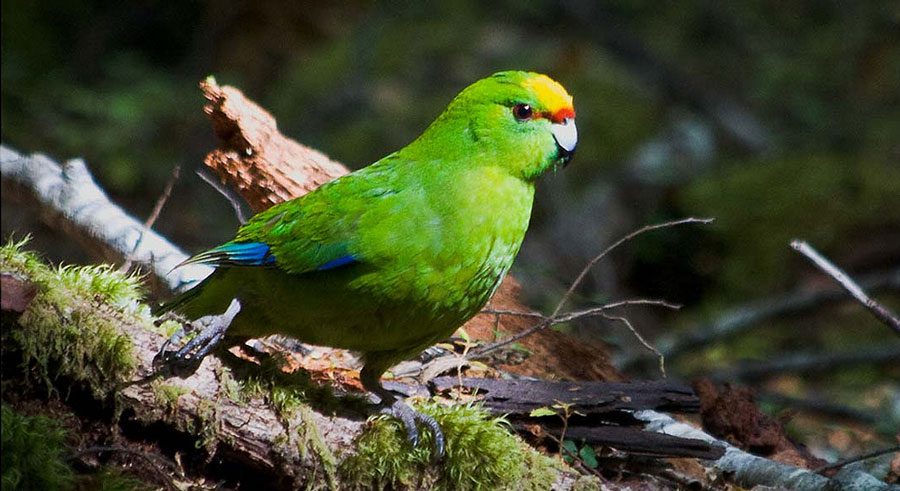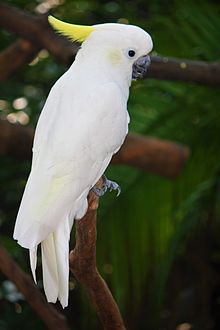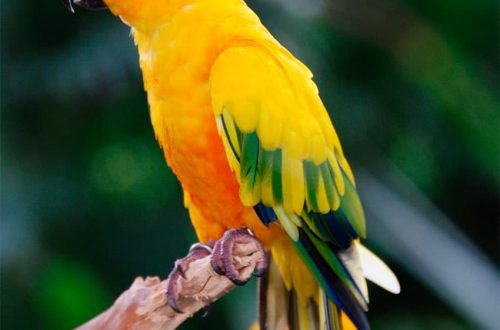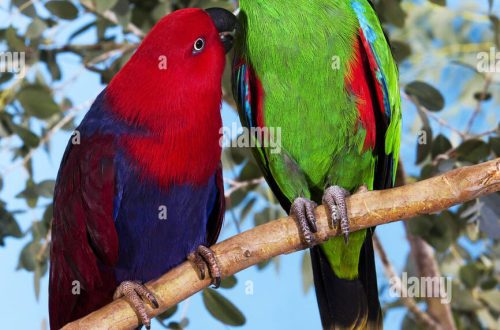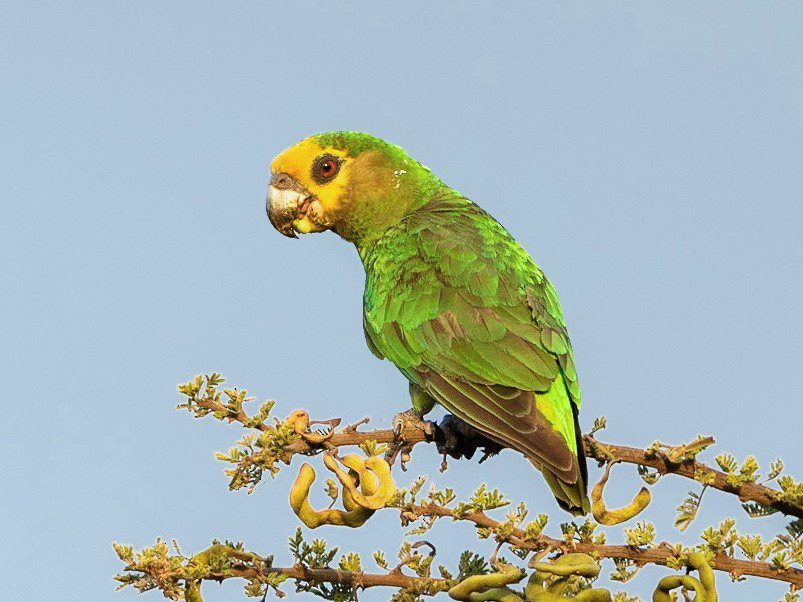
Yellow-fronted jumping parrot
Contents
| Yellow-fronted jumping parrot | Cyanoramphus auriceps |
| Order | Parrots |
| family | Parrots |
| Race | jumping parrots |
APPEARANCE OF THE YELLOW-HEADED JUMPING PARROT
A parakeet with a body length of up to 23 cm and a weight of up to 95 g. The main color of the body is dark green, the stripe above the nostrils and spots on both sides of the rump are bright red, the forehead is yellowish-gold. The beak is gray-blue with a dark tip, the paws are gray. The iris of a sexually mature male is orange, while that of a female is brown. There is no sexual dimorphism in color, but the beak and head of males are usually more powerful. Chicks are colored in the same way as adults, but the color is duller. Life expectancy is more than 10 years.
THE HABITATING AREAS OF THE YELLOW-FRONT JUMPING PARROT AND LIFE IN NATURE
The species is endemic to the islands of New Zealand. Once the species was distributed throughout New Zealand, however, after some predatory mammals were brought into the territory of the state, the birds suffered greatly from them. Humans have also caused damage to habitats. But, despite this, this type of parrot is quite common in New Zealand. The wild population numbers up to 30 individuals. Most often they prefer to settle in forests, but they can also be found in high mountain meadows, as well as on islands. Keep to the crowns of trees, and go down below in search of food. On small islands, where there are no predators, they often descend to the ground in search of food. Found in pairs or small flocks. The diet consists mainly of various seeds, leaves, buds and flowers. They also eat invertebrates.
REPRODUCTION OF THE YELLOW-FRONT JUMPING PARROT
The breeding season is October – December. Birds are looking for a suitable place for nesting – crevices between stones, burrows, old hollows. There, the female lays from 5 to 10 white eggs. The incubation period lasts 19 days. The chicks leave the nest fully fledged at 5 to 6 weeks of age. They stay close to their parents for another 4-5 weeks until they are completely independent.



